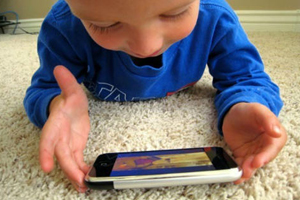The Amazing Technology Behind Touch Screens
 Resistive touch
Resistive touch
Peculiarities: Moving parts, electrical resistance, and analog in nature.
This is the traditional touch screen technology, based on electrical resistance principal, which refers to the easiness in flow of current. The screen is composed of two separate layers, the bottom layer is made of plastic, and the layer which gets touch is of glass. Each screen has array of transparent conductors (like Indium tin oxide, ITO), which run right angles with each other. When a screen is touched, the point will be intersection of two conductors meeting at right angles (a moment of parts occur here), giving out an analog signal, which ADC(analog to digital converter) intercepts and turns in to a digital signal.
It comes cheap, only one touch at a time can be sensed; anything from stylus to finger can be used to navigate on surface.
Capacitive Touch
Peculiarities: Solid state, electrical capacitance, and digital in nature.
This is relatively new technology, based on the principal of electrical capacitance principal, which refers for electrostatic charges and its behaviors. It is called as projective capacitance, may be just referred by “p-cap” or “pro-cap”. The screen is composed of two layers of conductors, separated by an insulator. The conductors use same design as resistive screen with transparent ITO conductors running right angles to each other, however they never have to bend or touch each other.
You could have come across electrostatic phenomena, it is when a plastic fabric is rubbed with amber rod and up on touching the fabric, you get spark, that is static charges get conducted. And other principal is that, when a charged surface is brought near a neutral surface, the surface gets charged too through induction. The two conductors have electrostatic charges on them matching same in quantity. When finger tip touches the surface, the surface conducts charge, which induces change of charge in base conductor. This change itself is the signal which carries users command (no movements of screen is required). There is a controller which filters out the signals, and decides whether the signal is hard or soft, or if it is the result of the palm of the hand resting on the screen and thus should be ignored.
It’s quite expensive, can sense multiple touches including gestures, and a conducting touch like tip of finger or other stylus imitating finger touch can only be used.
